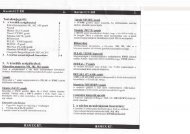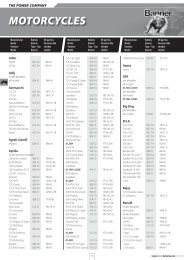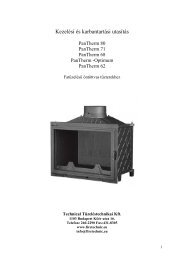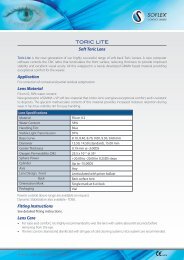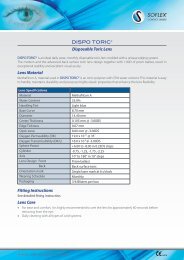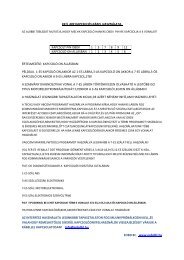5.8 Ghz Wireless Media sender GigaVideo 570TM
5.8 Ghz Wireless Media sender GigaVideo 570TM
5.8 Ghz Wireless Media sender GigaVideo 570TM
You also want an ePaper? Increase the reach of your titles
YUMPU automatically turns print PDFs into web optimized ePapers that Google loves.
7. Place the receiver in an easy accessible spot with enough space around it, e.g. on top of<br />
the TV. Point the inside (flat side) of the dish antenna [K] at the location of the transmitter.<br />
8. Put the side antenna [J] in an upright position.<br />
5. SETTING UP THE IR EXTENDER FEATURE.<br />
1. Connect the IR Extender included to the input [F] at the back of the transmitter<br />
(see figure 3).<br />
2. Remove the small paper protective label of one of the IR emitters. Place this IR emitter<br />
on the IR window of the A/V device you want to control. Affix the emitter very lightly.<br />
Before affixing the IR emitter firmly you are advised to check if the extender works<br />
properly. Therefore point your own remote at the window on the front of the receiver<br />
and press some of the channel choose buttons. If the channel does not change, the IR<br />
emitter may not be fixed in the right position. The position is sometimes critical. Repeat<br />
this procedure for fixing the 2nd IR emitter to the other A/V device connected.<br />
3. You can use the third IR to control a third A/V device. If you are not using this IR emitter,<br />
don’t remove it!<br />
6. FINE TUNING THE <strong>GigaVideo</strong>570 SET.<br />
ENGLISH<br />
Make sure your A/V equipment is switched on.<br />
When the receiver on your TV is connected with RCA plugs and/or a SCART adapter:<br />
Switch the TV, to which you have connected the receiver, over to the TV channel, which<br />
belongs to the A/V input, on which you have connected the receiver. In case of most appliances,<br />
you do that by pressing the 0 or A/V button. You will now have an image directly. The<br />
TV will never have to look for channels for the connection via ‘A/V IN’.<br />
When the receiver on your TV is connected to the RF output:<br />
Switch the TV, to which you have connected the receiver, over to TV channel 36.<br />
The wireless <strong>GigaVideo</strong>570 usually works best with the flat faces of the antennas [K] on the<br />
Transmitter and Receiver unit look at one another. Sometimes however distance, reflections<br />
and other effects in the home may affect the signal so that some adjustment of either<br />
Transmitter or Receiver antenna may be necessary to get the best signal. If still experiencing<br />
difficulty, try changing the "ABCD" channel selector [A] and change channels. Remember<br />
though both the receiver and transmitter must be on the same channel.<br />
The maximum distance between transmitter and receiver depends on local circumstances, but<br />
on average the distance is up to 30m, through walls and floors. If you experience signal problems<br />
please read chapter 9: Frequently Asked Questions.<br />
7. HOW DO I CONNECT THE <strong>GigaVideo</strong>570 TO MY PC.<br />
The <strong>GigaVideo</strong>570 has to be connected to the ‘TV-out’ or ‘Video-out’ of your PC. The connection<br />
can usually be found on the graphics card. The signal needs to be a so-called ‘composite<br />
video signal’. This is also called ‘CVBS’. Connecting to a PC can be done with RCA/RCA<br />
on A/V1b as well as RCA/mini-DIN on A/V2.<br />
The connector of your graphics card can look as follows (see figure 5):<br />
• Yellow RCA connector (RCA Yellow)<br />
If your PC is fitted with this connector, the yellow plug of the RCA cable included can<br />
be directly connected to the yellow RCA connector of your transmitter.<br />
GIGAVIDEO570 TM<br />
5




